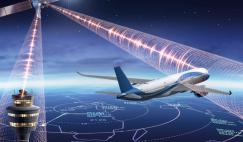So many books have been published on the Apollo programme that, one feels, if their titles were listed one-per-line, one would end up with another book on the Apollo programme! In the spirit of delving behind the headlines, this book gets down to the nitty-gritty of Apollo by presenting ‘the development programme for the Apollo programme’.
As the blurb reveals, the book contains “the entire plan, as it was summarized for a very limited number of people who were highly placed in the organizational structure”. The volume is a facsimile of NASA’s plan for Apollo dated 15 January 1965, which comprises 17 sections and a distribution list.
Space historians will consider this a fascinating reference document. Its relatively early date is reflected in some of the diagrams which show, for example, a “Lunar Excursion Module” with a cylindrical egress hatch (and no ladder!), a Saturn V without its distinctive black stripes, and an early sketch of the “vertical” (not vehicle) assembly building (VAB). It also contains a two-page fold-out of the “lunar orbital rendezvous mode”, which is an interesting document in itself.
But even non-space buffs with a penchant for management systems will find something in the book to whet their appetite, as a result of the Apollo programme’s ground-breaking role in developing organisational systems for large-scale projects. The “Apollo Program Government-Industry Functional Matrix” is almost a work of art: a mega-pie chart with six main segments and dozens of sub-segments displays, for example, how the spacesuit manufacturer reported to the Manned Spacecraft Center and the Crawler transporter supplier reported to Kennedy Space Center. Most people consider the Apollo programme a triumph of engineering and technology, which indeed it was, but beneath the rockets, modules, capsules and widgets was a management system that simply did not exist before Apollo. And people ask what we got out of going to the Moon!











